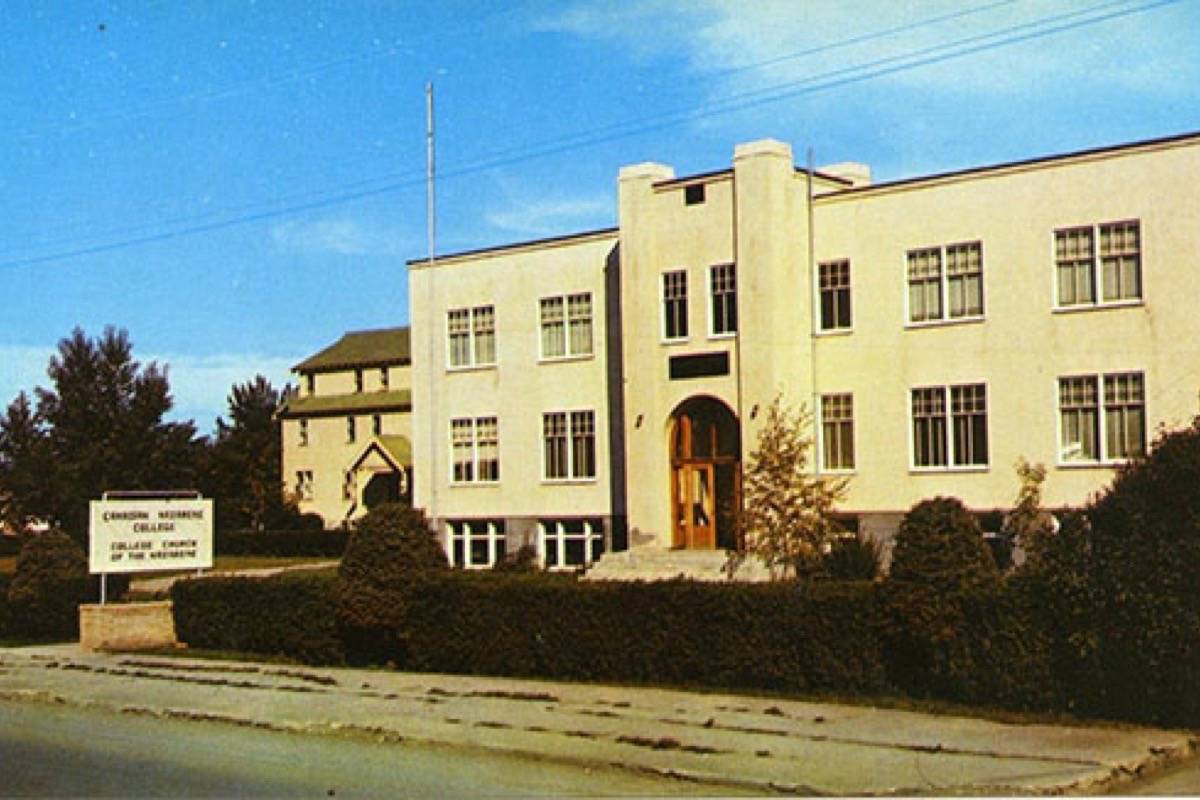This year marks the 50th anniversary of the current campus of Red Deer College, on the south side of the West Park subdivision.
However, despite this long history, Red Deer College is actually the fourth college to operate in Red Deer over roughly the past century.
The first was the Alberta Ladies College, which was built on the top of the East Hill in 1913. It provided educational opportunities for young women, particularly those from rural areas. Unfortunately, finances were a huge problem, particularly after the First World War broke out. Hence, the building was sold to the Alberta government in 1916 and the College relocated to Edmonton.
The second was St. Mary’s Apostolic College. It was created by the Priests of Ste. Marie de Tinchebray in North Red Deer to provide an education for boys and young men who might eventually consider studying for the priesthood. The P.S.M.’s had enough success that, in 1914, St. Mary’s was moved from the priests’ presbytery to a new two-storey building across the road to the north.
As was the case with the Alberta Ladies College, the outbreak of the First World War was a huge blow to St. Mary’s Apostolic College.
Many students enlisted for service overseas. The remaining students were relocated to Trochu. The College building was then taken over by the nuns of St. Joseph Convent (the Daughters of Wisdom) who used it as additional classroom and dormitory space for the students from the Convent.
Meanwhile, the Pentecostal Church of the Nazarene built a small church in Red Deer in 1913. Shortly thereafter, the Church, in conjunction with the Alberta and Saskatchewan Holiness Association, began holding regional revival and camp meetings in the community.
In 1923, land was purchased in the Woodlea area for the camp meetings. Two years later, an additional seven acres were purchased for summer camps and the construction of a tabernacle.
Shortly thereafter, in 1927, a decision was made to establish the Alberta School of Evangelism in Red Deer. Initially, the large old Springbett house on 48 St. was rented. It was used not only as the school, but also as the students’ dormitory and the home for Rev. Charles Thomson and his family.
Despite these very modest and cramped beginnings, the school flourished. In 1929, using a bequest and the proceeds from the sale of Rev. Thomson’s Model T Ford, a large parcel of land was purchased on the east side of Gaetz Avenue south of 45 St.
This new site became the campus for what was now going to be called the Northern Bible College. A large two-storey building, complete with a full basement, was constructed. Volunteer labour was used as much of possible. Some of the building materials were salvaged from other buildings such as the old brick Red Deer High School which had been replaced with a new high school in 1928.
Despite the onset of the Great Depression, the Northern Bible College thrived. As the original building became overcrowded, a second, three-storey building was constructed to the north in 1932. In 1940, the Northern Bible College was renamed the Canadian Nazarene College.
In the years following the Second World War, another eight acres were purchased for the Nazarene College campus. Additions were made to the dormitories and classrooms. An administration building was constructed in 1947.
In 1950, a building was moved from the old Penhold airbase for use as a chapel, music studios and gymnasium. It was nicknamed the ‘green cathedral’ by students. In 1956-57, the Martin Memorial Building was built to provide better auditorium and gymnasium facilities. The funds came from the sale of the Woodlea property.
In 1961, the Nazarene College was moved to Winnipeg. Much of the old campus was sold to Canada Safeway as a site for a large new supermarket (Port-O-Call).
Unfortunately, the move to Winnipeg did not work out as well as expected. The College then moved to Calgary.
The Nazarene University College became part of what is now known as Ambrose University in Calgary.



